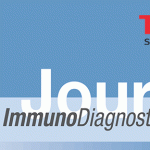High Tissue Transglutaminase Antibody Titers Are Diagnostic for Celiac Disease
We would like to share this recent review on the use of tissue transglutaminase antibody titers and use in the diagnosis of celiac disease.
High Tissue Transglutaminase Antibody Titers Are Diagnostic for Celiac Disease
David J. Bjorkman, MD, MSPH (HSA), SM (Epid.), reviewing Penny HA et al. Gut 2021 May
This review summarises that tissue transglutaminase antibody titers greater than 10 times the upper limit of normal predicts biopsy findings of celiac disease.
Celiac disease (CD) currently is diagnosed using both serologic testing (i.e., IgA anti–tissue transglutaminase [tTG] and anti-endomysial antibodies) and small bowel biopsy. Recent pediatric guidelines suggest that a high titer of tTG is sufficient to make the diagnosis and to start treatment without biopsy confirmation (J Pediatr Gastroenterol Nutr 2012; 54:136).
Investigators studied the sensitivity and specificity of high titers of tTG (i.e., ≥10 times the upper limit of normal [10×ULN]) in diagnosing adult CD. Three cohorts were studied retrospectively:
- Cohort 1 comprised 740 patients who were referred to a U.K. CD clinic (CD prevalence, 93%)
- Cohort 2 comprised 778 U.K. patients who were referred for routine endoscopy (CD prevalence, 3.2%)
- Cohort 3 comprised 145 patients (from 8 countries) with tTG and biopsy data available (CD prevalence, 92%).
The results for tTG values ≥10×ULN (using Marsh 3 duodenal changes as the gold standard) showed that the sensitivity, specificity, positive predictive value, and negative predictive values were as follows:
- Cohort 1: 54.0%, 90.0%, 98.7%, and 12.5%
- Cohort 2: 50.0%, 100%, 100%, and 98.3%
- Cohort 3: 30.0%, 83.0%, 95.2%, and 9.5%
The authors concluded that high titers of tTG are an accurate marker for CD and support a no-biopsy approach to diagnosis and treatment. Results vary with the prevalence of CD, and testing must be done without gluten restriction, which changes both serologic and biopsy findings. Using this high threshold (≥10×ULN) to diagnose and treat CD seems appropriate and might change the practice of many clinicians. Biopsies can be done in cases of treatment failure or atypical features.








